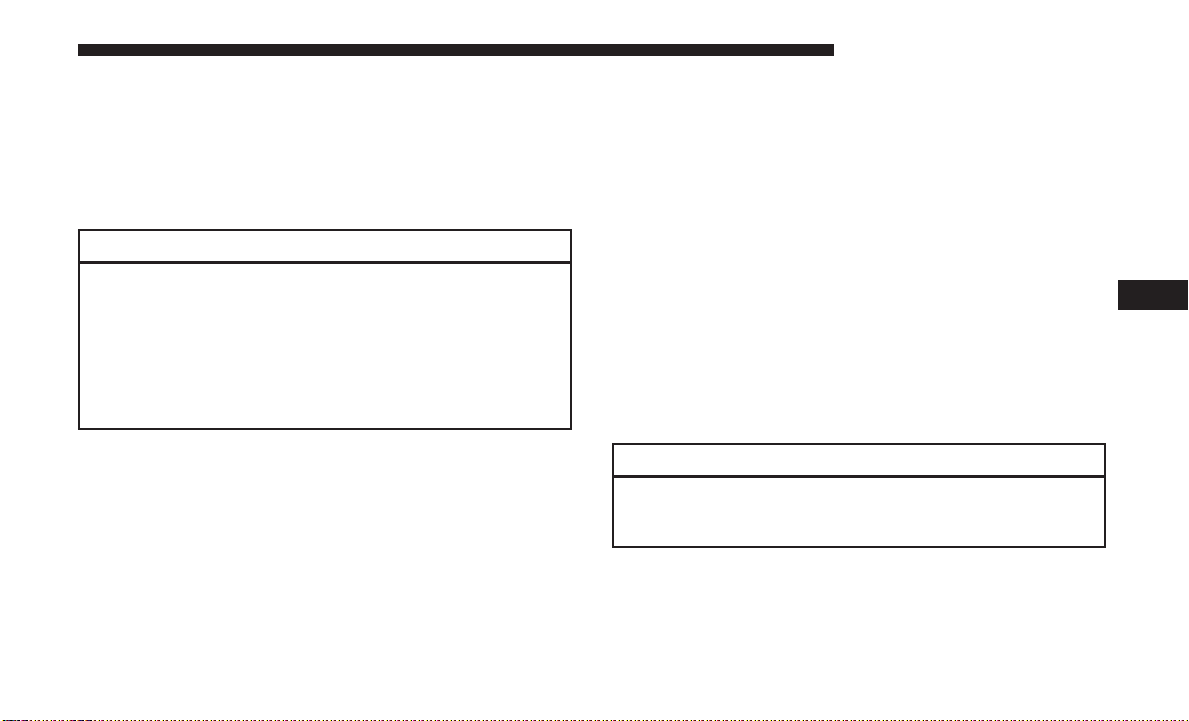Loading ...
Loading ...
Loading ...

with a constant slow speed (3-5 mph [5–8 km/h] maxi-
mum) and light throttle. Keep the vehicle moving; do not
try to accelerate through the crossing. After crossing any
water higher than the bottom of the axle differentials, you
should inspect all of the vehicle fluids for signs of water
ingestion.
CAUTION!
Water ingestion into the transaxle, transfer case, engine
or vehicle interior can occur if you drive too fast or
through too deep of water. Water can cause permanent
damage to engine, driveline or other vehicle compo-
nents and your brakes will be less effective once wet
and/or muddy.
Before You Cross Any Type Of Water
As you approach any type of water, you need to determine
if you can cross it safely and responsibly. If necessary, get
out and walk through the water or probe it with a stick.
You need to be sure of its depth, approach angle, current
and bottom condition. Be careful of murky or muddy
waters; check for hidden obstacles. Make sure you will not
be intruding on any wildlife, and you can recover the
vehicle if necessary. The key to a safe crossing is the water
depth, current and bottom conditions. On soft bottoms, the
vehicle will sink in, effectively increasing the water level on
the vehicle. Be sure to consider this when determining the
depth and the ability to safely cross.
Crossing Puddles, Pools, Flooded Areas Or Other
Standing Water
Puddles, pools, flooded or other standing water areas
normally contain murky or muddy waters. These water
types normally contain hidden obstacles and make it
difficult to determine an accurate water depth, approach
angle, and bottom condition. Murky or muddy water holes
are where you want to hook up tow straps prior to
entering. This makes for a faster, cleaner and easier vehicle
recovery. If you are able to determine you can safely cross,
than proceed using the low and slow method.
CAUTION!
Muddy waters can reduce the cooling system effective-
ness by depositing debris onto the radiator.
6
STARTING AND OPERATING 245
Loading ...
Loading ...
Loading ...